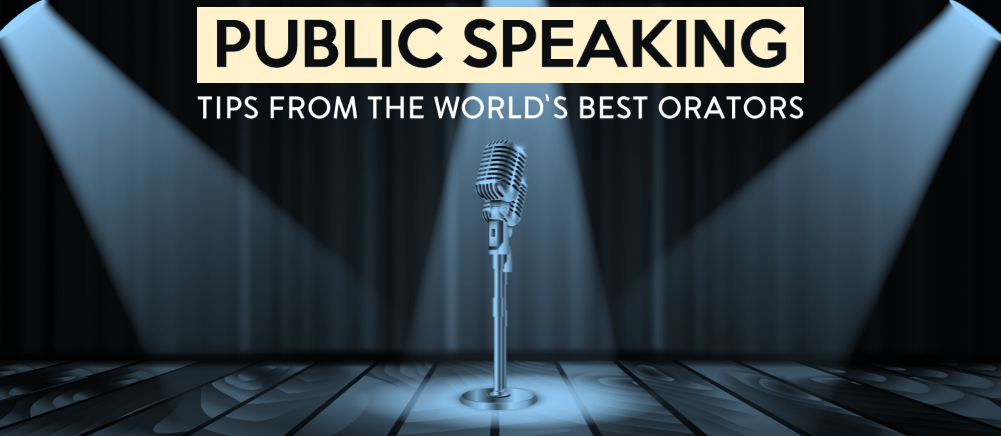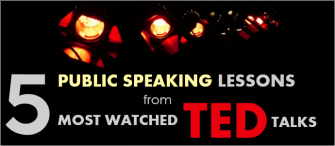Content is thorough, slides are wonderfully designed and now you have to get on the stage to talk about it.
Frightened, scared, uncomfortable or in other words are you suffering from Glossophobia?
Yes it is when you have a stage fright. But we understand how important presentations are in our lives. We have got to deal with them every day every minute.
So to make sure you ace this, let’s hone our public speaking skills.
Public speaking can either help you make a home run or ruin the day for audience (and yourself) with a lousy “performance.” Of course, we can improve our public speaking by practicing. But how about if we pick few amazing things from the world’s best living orators and inculcate them in our speech. Nothing can beat that, right?
Let’s pick one by one these wonderful orators and figure out how we can enhance our public speaking.
1) Barack Obama: Connects with the audience
Influential, strong, eloquent, patriotic, progressive, striking and much more. We can go on describing about such a great personality.
His genuine care for the people of the United States has led him to the most loving President ever. His concern about the people can be very well witnessed in his speeches. He interacts with his audience, talks to them, and makes a casual conversation. He finds a common ground that connects the audience to him.
With his story, people know that he is one of us. People could say, hey, that’s my story too.
Introduce yourself a little in the beginning of your presentation or in speech. Talk about your journey to success, struggles, or failures. Make a rapport with the audience. This way audience will get to know you better. They can relate themselves with you.
Also, Obama makes a casual interaction with his audience in between the speech to break the monotony. It saves the audience from the heavy discussion. He uses humor sparingly as it fills the room with positivity, and it shows how well he knows his audience.
Of course you don’t have to crack the unnecessary jokes to make your audience laugh. If you have an amazing sense of humor please go ahead. If not, then you better not try to be funny. It can backfire. But yes, you can interact with one or two of your colleagues in the middle (but don’t deviate from the topic) and keep the environment light.
Tip to be incorporated: Connect with the audience.
2) Oprah Winfrey: Emotions are powerful
She is a bold black woman. She is a role model to many. She is one of the most powerful women in the entertainment industry.
She naturally exudes her oratory skills. She plays with the words and through words, she expresses her feelings. We generally put our emotions behind while giving the speech and we just want to get to the end of it. We generally lose the essence of the speech or the presentation when we just want to finish it.
We should make a habit of introducing our emotions while speaking. If you are sad, express. If you are happy, convey. If you are excited, showcase. Take necessary pauses, use your hands while talking. Let your emotions come out freely.
Oh my goodness, I am at Harvard. Look at her go. Now you know what I am trying to say here. Let your emotions say your words.
Tip to be incorporated: Show your emotions, gestures.
3) Malala Yousafzai: Emphasize the right word
Malala Yousafzai, youngest person ever to win the Nobel Peace Prize. She is an inspiration to many young girls all over the world. She knows what she wants. She is clear and loud in her words. She makes sure people listen to her. To do so, she puts emphasis on the right words.
Did you notice the repetition? She said I believe twice. She repeated the word Education thrice. She repeats those words because they are important.
Never hesitate to repeat a word you think can put the impact on the audience.
Tip to be incorporated: Repeat important words.
4) Simon O. Sinek: Tell a story
If you binge on Ted Talks, must have heard him from there. He is a motivational speaker and a marketing consultant. Watch the video below.
Those who tell the story, rule the society, quoted by Plato.
Simon Sinek addressed his audience. He began the conversation by telling a story and then he explained what he was trying to say through the story. A good story telling can make or break a presentation or conversation.
Telling a story is the most powerful way to activate our brains. If you explain your presentation with bullet point or normal paragraphs, a certain part in the brain gets activated.
Science has proved that when we are being told a story, things change. Telling a story keeps the audience intact, aware and enlightened.
Try to begin your presentation with telling a story. Tell a story and rule the audience, said by someone.
Tip to be incorporated: Tell a story.
Easy, right? You know where you lack and where you excel. So work on each point individually or mix and merge the above points to give a well prepared presentation or speech.

Also, there are few common tips that work well on every presentation or speech.
- Be well versed with your content. Come prepared.
- Address your audience with greetings. Make eye contact with your audience.
- There should be a message in your presentation or speech. Message should be clear.
- Work on your diction. Say each word loud to improve your diction.
- Fancy words are not necessary.
- Fumbling is okay. Need not to be conscious about it. Go with a flow. Don’t apologize if you fumbled.
- Prepare in front of the mirror.
- End on a positive note.
- Say thank you when you are done.
- Inspire everyone.
Next time you are on the stage, come back with a home run.
Good luck.





 Customer Reviews
Customer Reviews



















